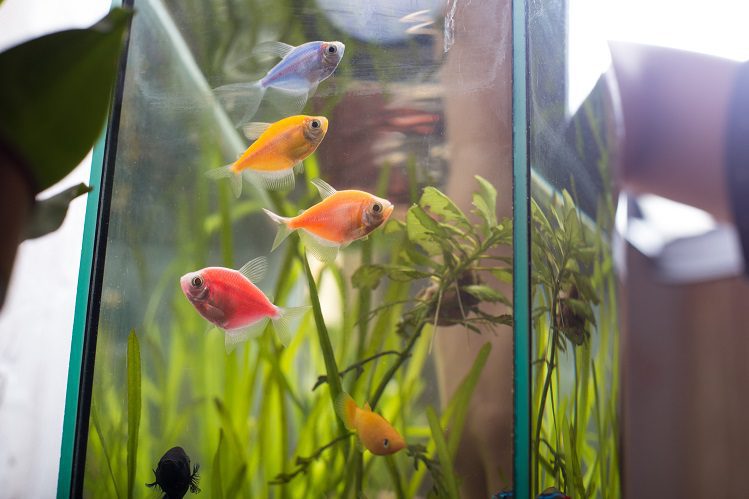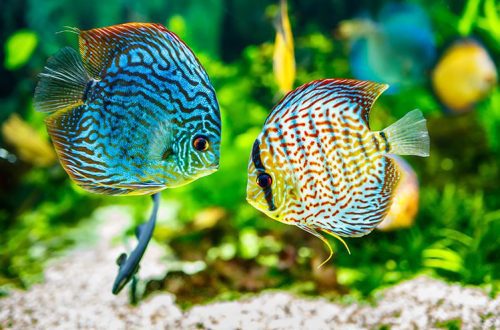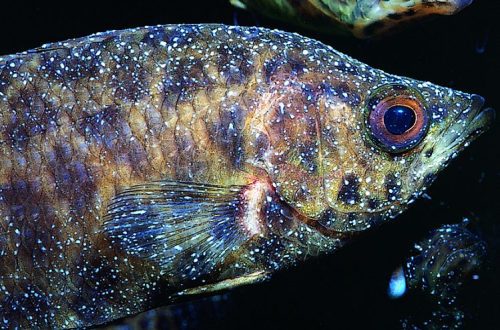
How to choose aquarium equipment?
Filter, heater, lamp, compressor – what equipment is needed for an aquarium and how to choose it?
A modern aquarium is unthinkable without high-quality equipment. It maintains the temperature, gives light, oxygenates the water, filters and purifies it. All this makes the life of the inhabitants comfortable, safe and facilitates the care of the aquarium. For stable operation, the aquarium needs the following set of equipment: a filter, a heater, a lamp and a compressor.
Contents
What are aquarium filters?
The filter is the heart of the aquarium, without which it cannot exist normally. The filter provides mechanical and biological purification, water circulation and serves as a substrate for the settlement of beneficial microflora.
All filters can be divided into internal and external. The former are installed directly into the water, while the latter have a volumetric canister, which is located outside, as a rule, in a pedestal, and two hoses are brought into the aquarium.
internal filters. Compact and easy to use. Placed directly inside the aquarium. Most models, in addition to filtration, also have an aeration function.
external filters. They have a large size of the filter canister, but at the same time they are installed outside the aquarium, therefore they do not spoil the appearance of the composition. They effectively purify water even with a high biological load and, thanks to a large number of specialized fillers, allow you to adjust the cleaning to the needs of the aquarium.
What is the best aquarium filter?
First of all, we will start from the volume of the aquarium, the filter power and the number of inhabitants. Remember that in sparsely populated aquariums it is enough for the filter to drive through itself 3-4 volumes of the aquarium per hour, and with medium and high stocking density – at least 5-6 volumes per hour. The filter capacity (liters per hour) will be indicated on the box.
For small to medium-sized aquariums with normal stocking density, the standard Tetra EasyCrystal filter is sufficient. This is a backpack filter with replaceable filter cartridges of three types depending on the needs of the aquarium (standard, activated carbon for clear water and anti-algae preparation). The filter also provides water mixing, and if there are very few fish, additional aeration is not required. At higher planting densities, it is also worth installing a compressor.
If there are a lot of fish in the aquarium, it needs a more powerful filter. In this case, pay attention to the Tetra FilterJet series. This is a powerful open sponge filter that also has a built-in aeration system. You don’t need to buy an additional compressor.
Most filters create an active current in the aquarium, and some inhabitants prefer stagnant water and feel uncomfortable with active water circulation. For them, you can use filters of the Tetra IN plus series, the nozzle of which is flattened horizontally and opens at the very surface, so it does not create currents in the water column. In addition, these filters have several removable canisters with filter sponges that can be washed in turn, thereby reducing the load on biofiltration and reducing the loss of beneficial microflora during cleaning.
For aquariums larger than 100 litres, as well as smaller aquariums with high stocking density, it is advisable to use an external filter. Its advantage is a large amount of filter material inside the canister, due to which a thorough mechanical and biological purification of water occurs. Moreover, the fillers can be changed depending on the needs of the aquarium. For example, add activated carbon to eliminate staining and odors or peat to soften water. The external filter does not take up useful volume inside the aquarium and does not spoil its appearance. External filters do not have a built-in aeration system, so a compressor is required.

How to choose compresses for an aquarium?
The compressor saturates the water with oxygen necessary for the respiration of the inhabitants. At the same time, many aquarists believe that if they have fish that breathe atmospheric air (gourami, bettas), then aeration in the aquarium is not needed. However, it is not. A large amount of oxygen goes to the decomposition of organic waste. With its shortage in the aquarium, toxic waste products appear that are dangerous to the health of the inhabitants. Therefore, aeration in the aquarium must be established in one way or another.
Many models of internal filters have a built-in aeration system and a compressor is not needed in such aquariums. Also, with a small number of fish in small aquariums, mounted backpack filters are quite enough, which mix the water, mixing it with air. In other cases, a compressor is needed.
Like the filter, the compressor is selected based on the power and size of the aquarium. Depending on the number of inhabitants, it should be about 0,5-1 l / h per 1 liter of water. If desired, it can be connected to special decorations or tubes that create the effect of a wall of bubbles.
The compressor will also need a set of accessories – a sprayer, a hose and a check valve. The non-return valve allows you to connect the compressor safely and prevents water from entering it in the event of a power outage. It is desirable to install it as high as possible so that if the hose is accidentally torn off, water does not flow out of the aquarium.
Which heater to choose for an aquarium?
Any aquarium needs a certain stable temperature. For most tropical fish, this is a temperature of 25-27°C. Even a drop of 1-2 ° per day is stress for the inhabitants, which affects the state of immunity, and sometimes health. The heater helps maintain the temperature. It is equipped with a built-in thermostat, so it does not overheat the aquarium, but turns off when it reaches the desired values.
The power of the heater is selected at the rate of 0,5-1 W per 1 liter of water. The packaging always indicates how much water this particular heater is designed for.
What lamp to choose for an aquarium?
Light is essential in any aquarium. The fish get used to a certain daylight and feeding regime, so it is advisable to turn the light on and off at the same time, for this you can set a timer. In addition, light is vital for aquarium plants.
In aquariums without live plants or with a small number of them, standard lighting, which is equipped with any Tetra aquarium, is quite sufficient.
An aquarium herbalist may need a more powerful light with a spectrum that is most suitable for living plants. You can use Tetra LightWave or Tetronic LED ProLine fixtures. When choosing a lamp, you should first of all focus on the length of the aquarium, or the length of the lamp, instead of which the lamp will be installed. It should be as long as possible, but at the same time slightly shorter than the length of the aquarium (or the distance between the cartridges).
The Tetra LightWave Set is an easy way to upgrade to modern, durable and economical LED lighting. Simply fits into T5 or T8 lampholders, consumes half as much energy as a fluorescent lamp. The Tetra LightWave Timer also adjusts the brightness of the luminaire and creates the effect of sunrise and sunset. If desired, you can connect an additional lamp through a splitter – this can be important for aquariums with a large number of plants or non-standard, tall aquariums.
Tetronic LED ProLine is a powerful lamp for aquariums with a large number of plants. Has a wide variety of mounting options. It has two operating modes – day and night. It has various mounting options: in T8 and T5 cartridges, directly into the lid, and also in an aquarium without a lid mounted on the side walls or on the back (using Tetronic LED ProLine Arms holders). Lamp life is 50 hours.
It is important to choose the right equipment from the very beginning. Properly selected equipment automates and stabilizes all processes in the aquarium as much as possible, makes its maintenance easy, and the life of the inhabitants comfortable and safe.





